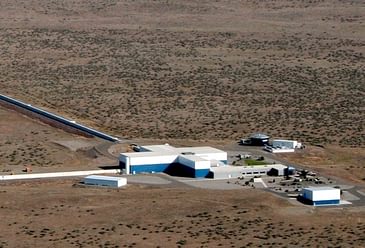In this episode Shelly speaks to Tiffany Nichols, doctoral candidate at the Department of the History of Science at Harvard University, graduate student affiliate at the Black Hole Initiative and a National Science Foundation grantee. Her research focuses on how place, surrounding environment, and laboratory are embedded in the outputs signals of The Laser Interferometer Gravitational-Wave Observatory, also known as LIGO.
To begin, Shelly provides a condensed timeline of the LIGO project from the theoretical efforts of the 1960s to first gravitational wave detection in 2015. Tiffany then shares a portion of her extensive knowledge on LIGO. As its name suggests, LIGO uses laser interferometry to detect gravitational waves by analyzing properties of light. Gravitational waves can signal other forms of detection, such as x-rays, and give us additional information on black holes and periodic table elements. The concept dates back to Einstein’s development of the theory of relativity. He was unsure if gravitational waves existed and if so, believed them to be undetectable. At the time, much of science was focused on areas applicable to the military and the existence of gravitational waves was still ambiguous. Thus, there was much skepticism among the science community around LIGO in its early stages. It wasn’t until the 1990s that science began to accept the existence of gravitational waves and their detectability.
The two LIGO locations, in Washington and in Louisiana, are both L-shaped with both side about 5 miles long. There were many different criteria to consider when choosing a site for the project, making the quest a bit challenging. For example, they needed as little seismic noise as possible, the interferometers should be at least 1500 km apart and the sites needed the support of the local community and state. Ultimately, however, the needs were met and the locations secured. The two discuss how site selection was impacted by Cold War politics and influenced by the existing nuclear weapons complexes.
In closing, they discuss the future of LIGO and exciting upcoming projects.
Links:
Tiffany Nichols: https://nichols-tiffany.com
Twitter @onthemasspike
Send an email to My Nuclear Life
Cover picture via:
https://www.ligo.caltech.edu/WA/image/ligo20150731e
Please leave a 5-star review on iTunes and subscribe to My Nuclear Life wherever you listen to podcasts.
Production costs for this episode were provided through National Science Foundation Grants PHY-2011267.





